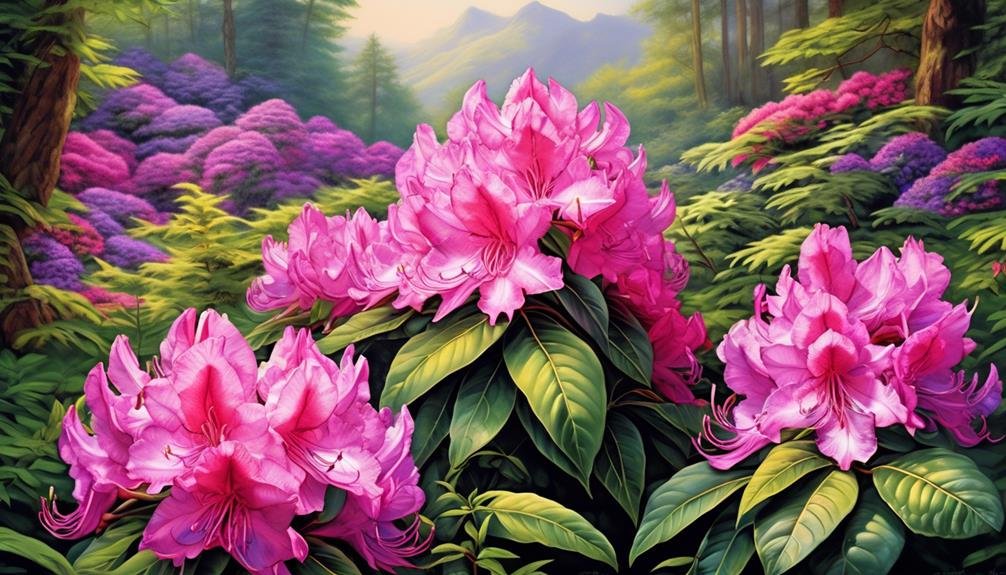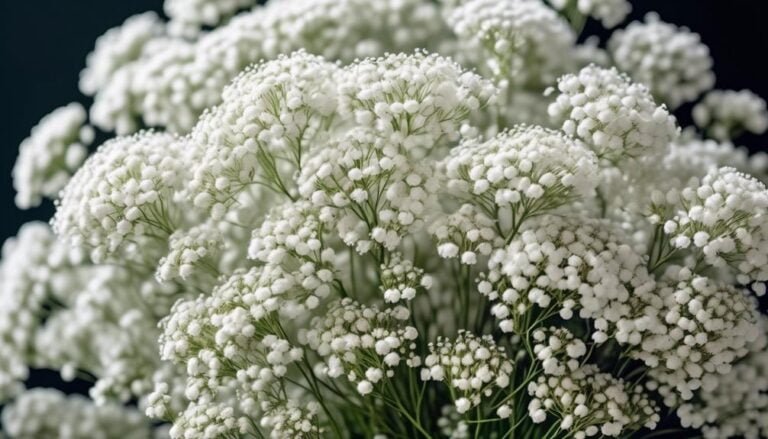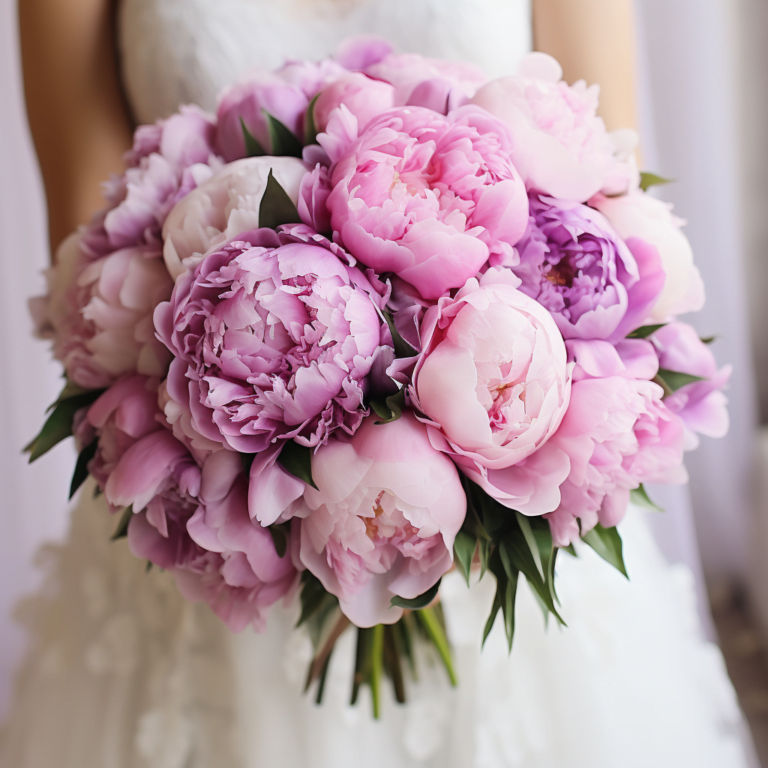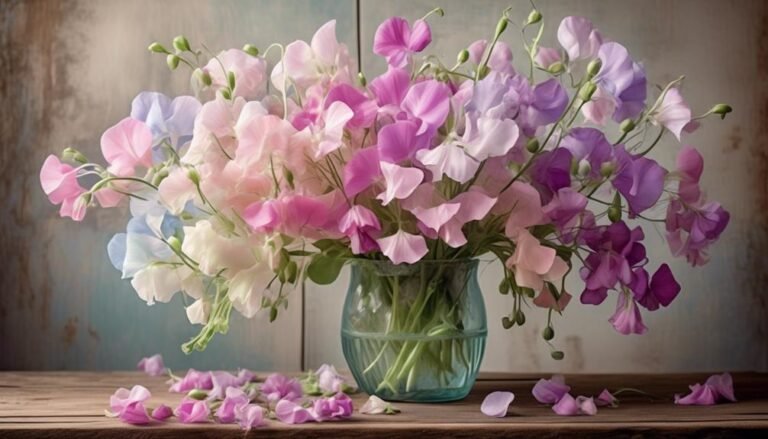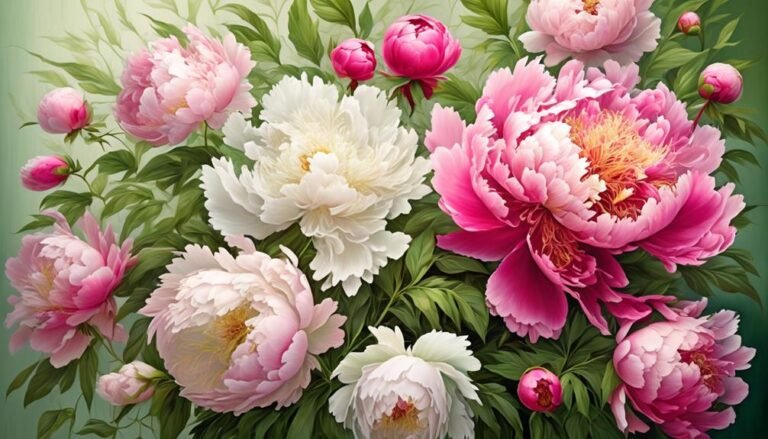Popular Types of Florist Flowers – Rhododendron
The Rhododendron flowers are not only visually stunning but also hold a rich history and cultural significance. These popular florist flowers have a scientific name 'Rhododendron' and come in various vibrant colors, making them a favorite for flower enthusiasts.
Botanical Interest:
Rhododendrons are part of the Ericaceae family and are known for their evergreen leaves and showy clusters of flowers. They thrive in acidic soil and are often found in mountainous regions.
Cultural Significance:
In many cultures, Rhododendrons symbolize beauty, love, and even danger. They have been featured in art, literature, and mythology, adding to their allure and mystique.
Characteristics:
Rhododendrons come in a wide range of colors, including pink, purple, red, white, and yellow. They also vary in size, from small shrubs to large trees, offering a diverse selection for floral arrangements.
Overall, the Rhododendron flowers offer a captivating blend of beauty, history, and cultural significance, making them a beloved choice for florists and flower enthusiasts alike.
Scientific Name
The Rhododendron genus, with its striking woody plants in the heath family, derives its scientific name from the Greek words 'rhodon' meaning rose and 'dendron' meaning tree. This reflects the beauty and tree-like nature of these plants.
Rhododendrons have a rich history dating back centuries, with common names varying across different regions and cultures. In the United States, they're commonly referred to as 'rose trees' or 'alpine roses' due to their tree-like growth habit and the rose-like appearance of their flowers. In the United Kingdom, they're often called 'rhodos' for short.
In parts of Asia, they're known as 'azaleas', which is also used in the United States. The Azalea Society of America considers azaleas to be a separate genus, although they belong to the same family as rhododendrons.
The history and common names of the rhododendron genus reflect the widespread admiration and cultivation of these plants globally. Whether they're called rhododendrons, azaleas, alpine roses, or rhodos, these botanical marvels have captured the fascination of horticulturists, gardeners, and nature enthusiasts for centuries.
Background History
The Rhododendron genus, named for the Greek words meaning 'rose' and 'tree,' has a fascinating history rooted in Greek mythology. According to the myth, a beautiful nymph named Rhododendron, who rebuffed the advances of the god of the forest, Pan, was transformed into a flowering shrub as a result. This mythological tale has contributed to the enduring association of rhododendrons with beauty and resilience.
Rhododendrons have a significant impact on the local ecosystem and wildlife. They can outcompete native plants for resources, alter soil pH and chemistry, and affect the composition of surrounding plant communities. Additionally, rhododendrons can be toxic to livestock and some wildlife species. However, they also provide nectar for pollinators, highlighting the complexity of their impact on the environment.
Managing the presence of rhododendrons is crucial to preserving native flora and fauna while still appreciating the beauty and cultural significance of these plants.
Physical Description
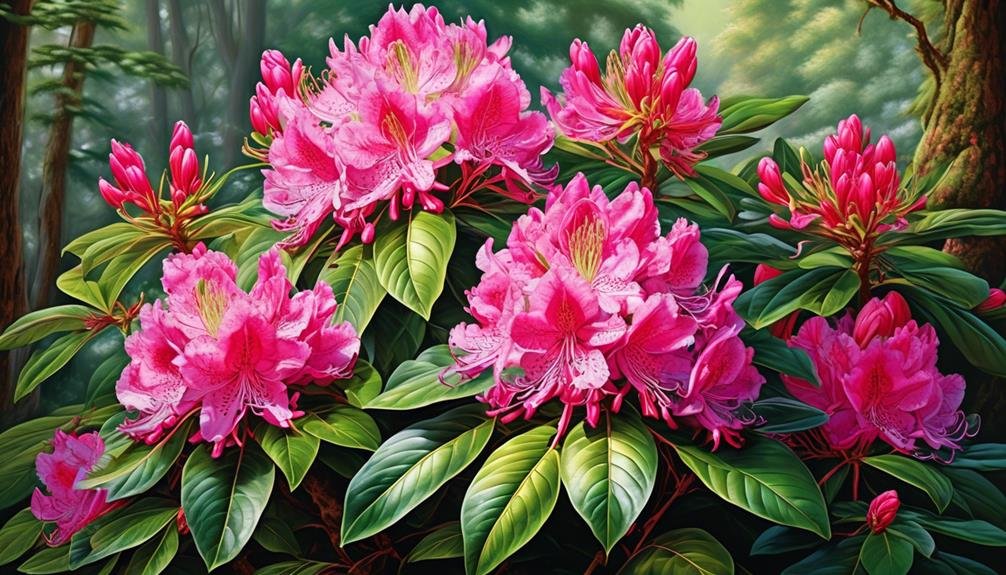
Rhododendron flowers boast a stunning array of vibrant colors, including pink, purple, orange, red, and white, making them a captivating choice for floral arrangements. Some species feature rich, deep tones like deep reds, purples, and oranges, adding a bold and dramatic touch to floral compositions.
Others showcase delicate pastel hues of pink and white, evoking elegance and grace in floral design. The flowers typically have a unique bell, funnel, or trumpet shape, adding to their distinct appearance and creating focal points in floral designs.
Their vibrant colors and distinctive shape make them an ideal choice for pairing with foliage and modest filler flowers in bouquet designs, enhancing the overall visual impact of floral compositions.
Colours and Characteristics
Rhododendron flowers are known for their vibrant colors and unique shapes, making them a popular choice for floral arrangements. They come in various colors such as pink, purple, orange, red, and white, offering a wide range of options for creative compositions. When creating floral arrangements with Rhododendron flowers, it's important to pair them with complementary foliage and modest filler flowers like baby's breath to achieve a balanced and visually appealing bouquet.
The bell, funnel, or trumpet shape of Rhododendron flowers adds an interesting and distinctive feature to bouquets and floral designs, making them a captivating focal point. Their vibrant colors and unique shapes have led to a growing trend of incorporating Rhododendron blooms in wedding bouquets, adding a touch of elegance and individuality to bridal arrangements.
For brides looking to include Rhododendron flowers in their wedding bouquets, it's important to consider pairing them with contrasting blooms to create a stunning visual impact. It's also essential to be aware of the potential risks associated with certain varieties of Rhododendron flowers, especially when used in culinary decorations or wedding bouquets. In Nepal, Rhododendron flowers hold cultural significance as the natural flower and are enjoyed for their sour taste, but caution should be exercised as not all types of Rhododendron blooms are safe for consumption.
Varieties Available
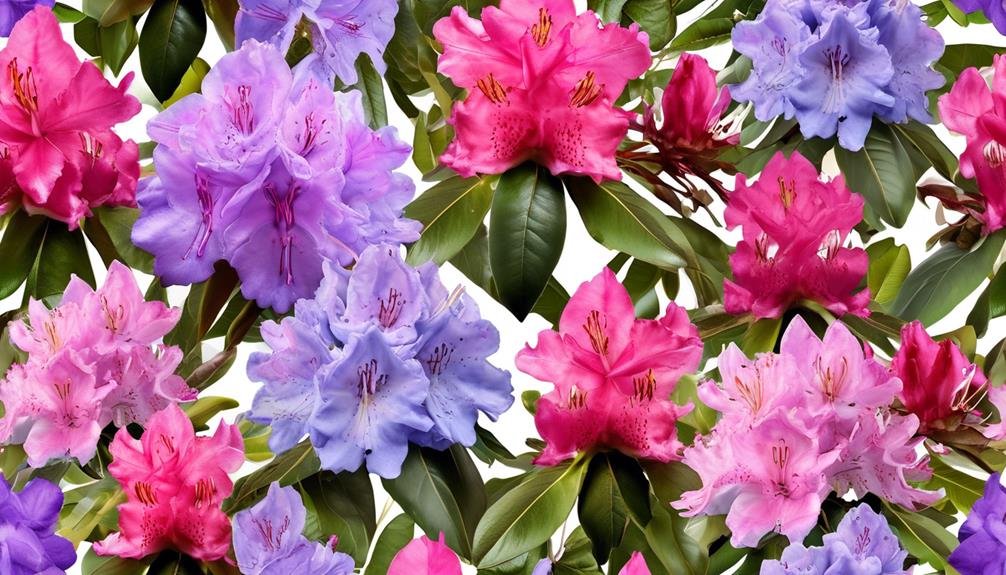
Rhododendron varieties come in a wide range of vibrant colors, including pink, purple, orange, red, and white.
For example, 'Cherry Cheesecake' and 'Nova Zembla' offer stunning red blooms, while 'Blue Peter' boasts bold purple flowers.
It's important to choose varieties that are well-suited to your local climate, as certain types thrive in specific hardiness zones.
For instance, 'Loderi King George' is ideal for zones 7-9, while 'Ken Janeck' and 'Nestucca' are better suited for zones 5-8.
In landscaping, rhododendrons can be used to create colorful borders, add visual interest to woodland gardens, and enhance mixed shrub borders for a dynamic landscape.
Seasonal Availability
Rhododendron flowers are at their peak in spring and early summer, thriving in cooler climates. Choosing the right variety is crucial for successful growth. Hardy options like the PJM group and English Roseum series are ideal for colder regions, while the Southgate and Cunningham's White varieties are better suited for warmer climates.
To preserve Rhododendron flowers, cut the stems at a 45-degree angle and place them in lukewarm water with floral preservative. Mist the flowers regularly, keep them away from direct sunlight and heat sources, and remove any submerged leaves to prevent bacterial growth. Storing the flowers in a cool environment, such as a refrigerator, can also extend their shelf life, especially in warmer weather.
Care Tips
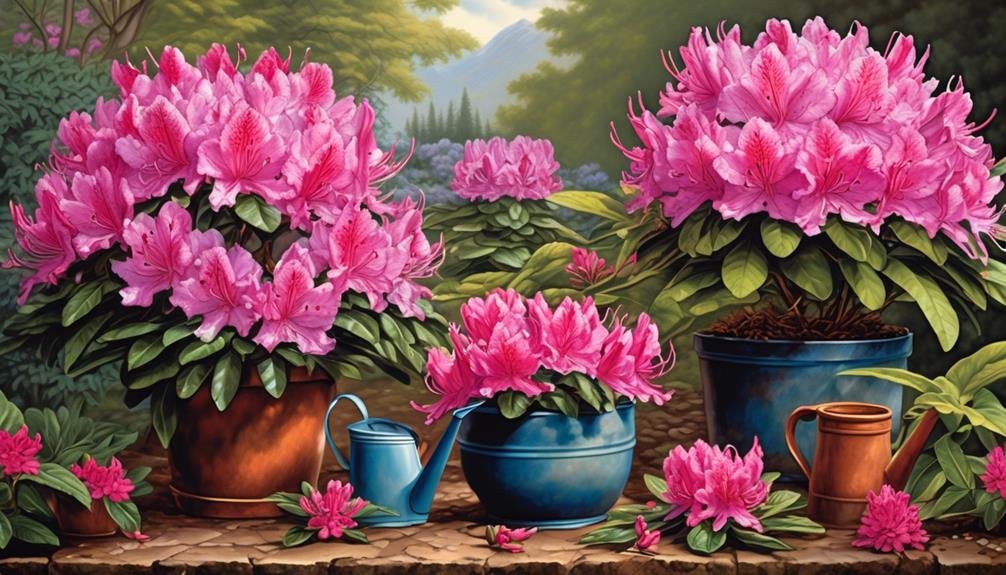
Rhododendron flowers require specific care to maintain their freshness and vitality. Here are some essential care tips to ensure your Rhododendron flowers stay beautiful for longer:
- Pruning Techniques:
- Trim the stems of Rhododendron flowers upon arrival to encourage water uptake and prolong their freshness. Use clean and sharp pruning shears to make a diagonal cut, which increases the surface area for water absorption.
- Remove any wilting flowers or foliage from the arrangement to maintain its overall freshness and appearance. Pruning also prevents the plant from expending energy on dying blooms, promoting the development of new buds.
- Toxicity Precautions:
- Handle Rhododendron flowers with caution as they may contain toxic properties. Wear gloves when handling them to avoid skin irritation and wash your hands thoroughly after contact.
- Keep Rhododendron flowers away from areas where meals are prepared or enjoyed. If ingested, these flowers can cause gastrointestinal discomfort in humans and animals. Place them out of reach of pets and children, and ensure that any fallen petals or leaves are promptly cleaned up.
What Are the Differences Between Rhododendron and Camellia Flowers?
Rhododendron and camellia flowers are both popular types of florist flowers, but they have some key differences. Rhododendron blooms are larger and come in various shades, while camellia flowers are smaller and typically have a more delicate appearance. Additionally, rhododendron blossoms tend to last longer once cut.
Conclusion
Rhododendrons are popular florist flowers known for their vibrant colors and unique bell, funnel, or trumpet shape. These beautiful flowers add a touch of elegance to any bouquet and are widely used for their aesthetic beauty and ornamental value in floral arrangements.
It's important to note that while Rhododendrons are visually stunning, not all varieties of their blooms are safe for consumption due to their toxic properties.
With proper care and handling, these flowers can be enjoyed for their beauty and decorative appeal.
